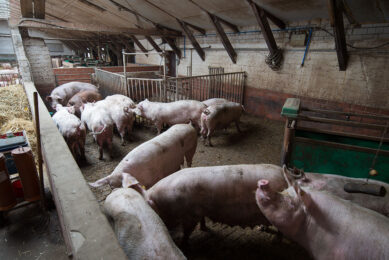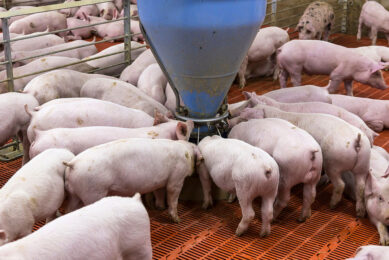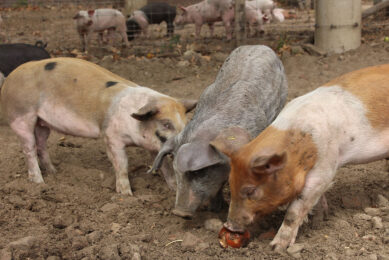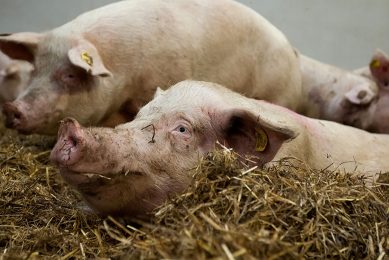Housing conditions and behaviour affect growing pigs’ health
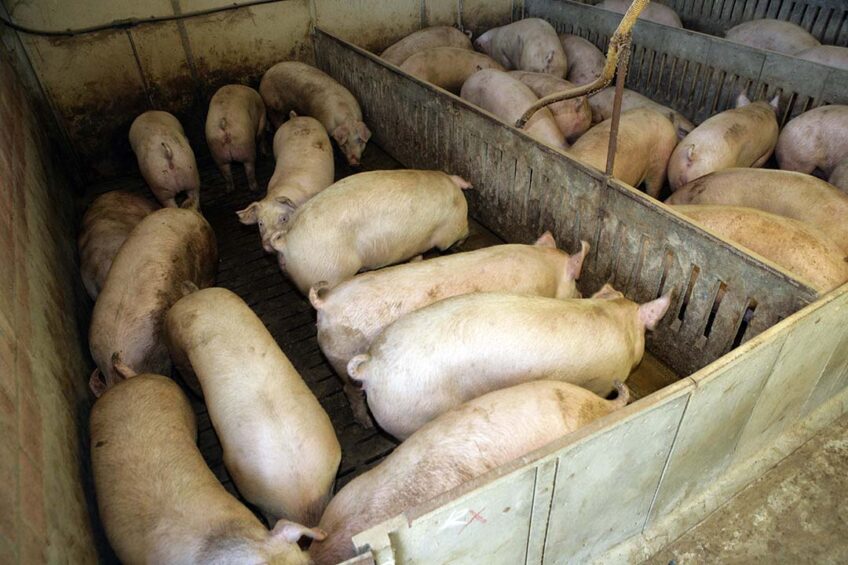
Researchers from Italy assessed the relationship between housing conditions, and behavioural and health disorders of growing pigs raised in an intensive Italian farming system.
Environmental factors and management practices affect the health and welfare of growing pigs in intensive swine farming systems. Aggressive behaviour and tail lesions are major issues with significant impact on welfare, productivity, and profitability. Therefore, identification and evaluation of environmental and rearing conditions associated with welfare and health in growing pigs are key points to improve pig welfare and productivity.
Data collection
Group observations involved a total of 44 different rearing pens with an average number of 31 pigs per rearing pen. Pig farms were artificially ventilated, and pens had a partially slatted floor. The team reared pigs with undocked or docked tails in separated pens.
Housing condition measures including dry and wet bulb temperatures. The researchers measured humidity, light intensity, and the proportions of gases in the air. They did so at various spots:
in the nearest corner to the middle of the room with multiple pens,
in the middle
in the opposite corner nearest the outer wall.
The team recorded rearing conditions including the space allowance available for each pen, the feeder front available for each pig, and the level of cleanliness (0 = dirty and 1 = clean) of each experimental pen.
The behavioural measures recorded involved sucking behaviour, social behaviour, exploratory behaviour, and inactive or resting behaviour. Social behaviour comprised of biting or aggressive behaviour, sniffing, nosing, licking, playing, and moving gently away from the other animals without any aggressive or fighting reaction.
Exploratory behaviour included sniffing, nosing, licking and exploring enrichment materials. The researcers evaluated the percentage of bursitis, lameness, ear, and tail lesions as well.
Effects of housing conditions on behaviour of growing pigs
An increase in wet bulb temperature enhanced ‘positive’ behaviour and the proportion of animals exploring the enrichment material. However, temperature out of the pigs’ comfort zone is a major stress factor affecting behaviour and health. This lead to a higher frequency of aggressive behaviour as pigs searched for wet and isolated areas.
An increase in light intensity decreased the frequency of resting and positive behaviour. It also increased tail lesions, indicating that an increased light intensity could be a risk factor for growing pigs.
Increasing the proportion of oxygen and ammonia enhanced positive behaviour. Increasing the proportion of carbon dioxide decreased the proportion of pigs exploring the pen and improved resting behaviour.
Ear lesions increased with an increased proportion of carbon dioxide in the air and with an increasing proportion of pigs exploring the pen
Effects of rearing conditions on behavior of growing pigs
Greater space allowance improved positive behaviour in pigs. The feeder front available for each pig decreased sucking behaviour and increased the proportion of pigs exploring the enrichment materials. In addition, increasing the degree of floor cleanliness decreased the proportion of pigs expressing positive behaviour. Also, an increase in the average body weight enhanced the proportion of animals exploring the pen.
Impact of housing conditions and behavior on lesion and health of growing pigs
The proportion of bursitis in the pen increased with an increasing proportion of pigs showing sucking behaviour in the pen. The proportion of lameness increased with an increasing proportion of animals showing positive behaviour. Ear lesions increased with an increased proportion of carbon dioxide in the air and with an increasing proportion of pigs exploring the pen.
Tail lesions increased with an increasing proportion of pigs showing negative behaviour, with the increase in light intensity and with an increasing proportion of carbon dioxide. It decreased the average body weight of the pen, and the space allowance. Undocked pigs showed a greater tail lesion than tail docked pigs.
Conclusions
The authors concluded that in growing rearing farms increases in light intensity and carbon dioxide concentrations negatively affect growing pig welfare and behaviour. Greater space allowance is an effective tool to mitigate this problem.



